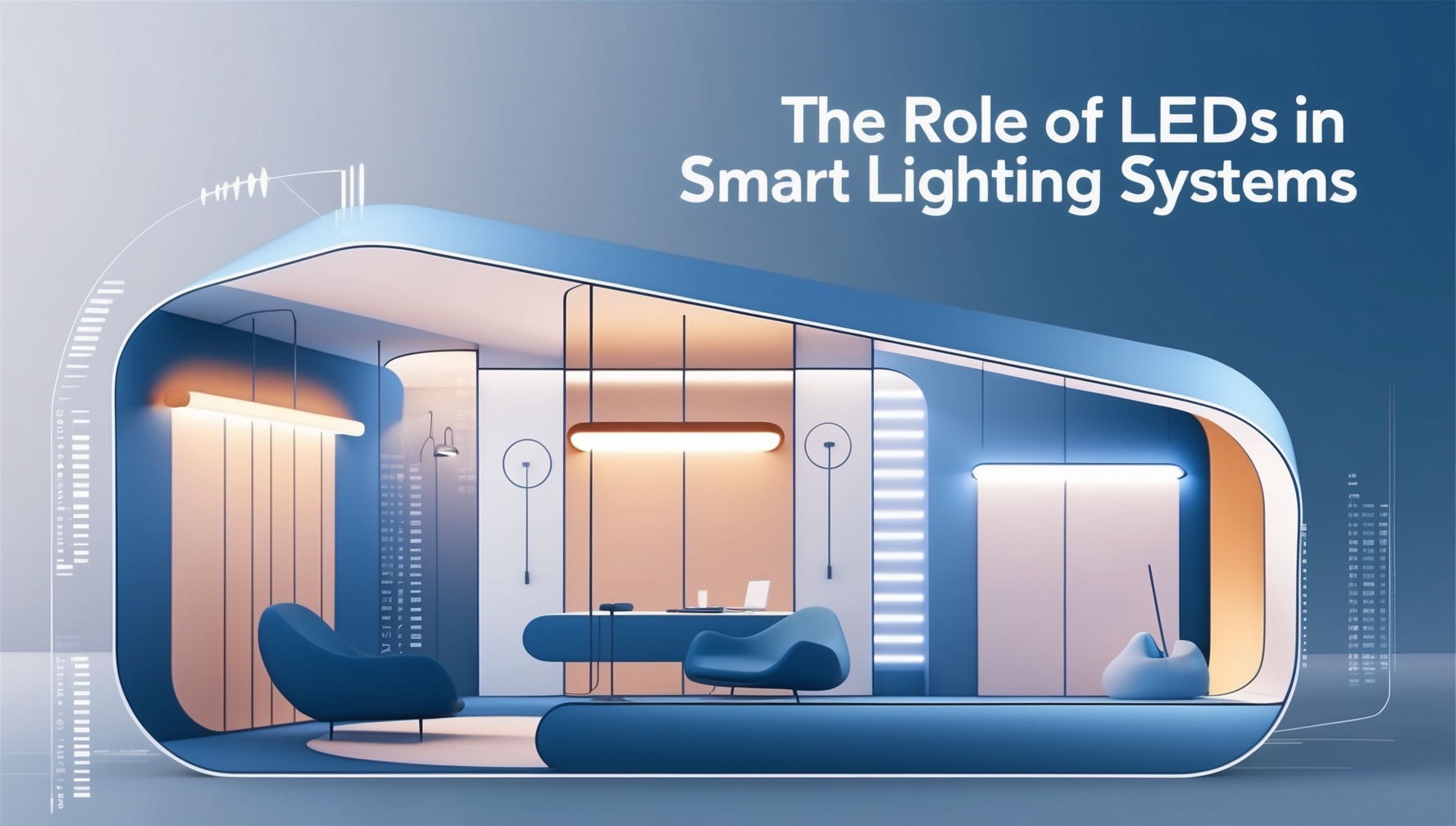Smart lighting systems have transformed the way we think about and interact with our lighting environments. At the core of these innovations are Light Emitting Diodes (LEDs), which play a crucial role in enabling the flexibility, efficiency, and connectivity that define smart lighting. This article explores the role of LEDs in smart lighting systems, examining their benefits, applications, and how they contribute to the future of intelligent lighting solutions.
Why LEDs are Essential for Smart Lighting
LEDs are integral to smart lighting systems for several reasons:
- Energy Efficiency: LEDs are among the most energy-efficient lighting technologies available, converting a high percentage of electrical energy into light with minimal heat loss. This efficiency is a key factor in the sustainability goals of smart lighting, reducing energy consumption and operational costs. Understanding how LED lights work is key to appreciating their energy efficiency. LEDs convert electrical energy into light with minimal heat loss, which is a significant advantage over traditional lighting technologies.
- Longevity: LEDs have a significantly longer lifespan compared to traditional incandescent or fluorescent bulbs, often lasting up to 50,000 hours or more. This longevity is particularly important in smart lighting systems, where maintenance can be complex and costly.
- Dimmability: LEDs can be easily dimmed without losing efficiency, unlike some other lighting technologies. This feature is crucial for smart lighting systems, which often include the ability to adjust brightness levels automatically or based on user preferences.
- Instant On/Off: LEDs provide instant light when switched on, with no warm-up time required. This responsiveness is vital for smart lighting, where lights may need to react quickly to sensor inputs or user commands.
- Color Versatility: LEDs can produce a wide range of colors without the need for filters, making them ideal for dynamic lighting environments. Smart lighting systems often utilize this capability to create ambiance, improve well-being, or enhance functionality in different settings.
How LEDs Enable Smart Lighting Features
LEDs are not just efficient light sources; they also enable a variety of smart features that enhance user experience and control:
- Connectivity and Control: LEDs can be integrated with wireless communication technologies such as Wi-Fi, Bluetooth, or Zigbee, allowing them to be controlled remotely via smartphones, tablets, or voice assistants. Users can adjust brightness, color, and scheduling from anywhere, providing unprecedented control over their lighting environment.
- Sensor Integration: LEDs in smart lighting systems are often paired with sensors that detect motion, ambient light levels, and occupancy. These sensors enable lights to turn on or off automatically, adjust based on natural light, or change color temperature throughout the day to mimic natural light patterns, promoting comfort and energy savings.
- Automation and Scheduling: Smart lighting systems with LEDs can be programmed to follow specific schedules, turning on or off, dimming, or changing colors at preset times. This feature is particularly useful for enhancing security, reducing energy waste, and improving convenience.
- Adaptive Lighting: LEDs are capable of adaptive lighting, where the light intensity and color temperature can be adjusted automatically based on environmental factors or user activities. For example, a smart lighting system might use warmer tones in the evening to promote relaxation or cooler tones during work hours to boost focus.
Applications of LEDs in Smart Lighting Systems
The versatility and functionality of LEDs make them ideal for various smart lighting applications:
- Residential Lighting: In homes, LEDs are used in smart bulbs, fixtures, and even strips, providing customizable lighting environments. Homeowners can create scenes for different activities, automate lighting based on time or occupancy, and integrate lighting with other smart home devices for a cohesive experience.
- Commercial and Office Spaces: Smart LED lighting in commercial settings helps improve productivity and reduce energy costs. Offices can implement circadian lighting systems that adjust to the natural daylight cycle, enhancing employee well-being. In retail environments, dynamic LED lighting can be used to highlight products and create engaging shopping experiences.
- Street and Outdoor Lighting: Smart LEDs are increasingly being used in street lighting, where they offer significant energy savings and maintenance reductions. These systems can adjust brightness based on traffic and pedestrian presence, improving safety while conserving energy.
- Healthcare and Well-being: In healthcare settings, smart LED lighting systems can be used to support patient recovery by simulating natural daylight, reducing stress, and improving sleep patterns. In wellness facilities, LEDs provide customizable environments that can enhance relaxation or invigorate spaces as needed.
The Future of LEDs in Smart Lighting
Recent innovations in LED design are pushing the boundaries of what’s possible in smart lighting systems. These advancements are paving the way for more efficient, adaptive, and integrated lighting solutions. Future developments may include:
- Enhanced Integration with IoT: LEDs will likely become even more integrated with the Internet of Things (IoT), enabling seamless communication between lighting systems and other smart devices. This integration could lead to more personalized lighting experiences and advanced automation capabilities.
- Advanced Sensors and AI: The combination of LEDs with advanced sensors and artificial intelligence (AI) could result in lighting systems that learn user preferences over time, automatically optimizing lighting for comfort, productivity, and energy savings.
- Sustainability and Smart Cities: LEDs will play a crucial role in the development of sustainable smart cities, where energy-efficient lighting is a cornerstone of urban infrastructure. Smart streetlights, powered by LEDs and controlled via central systems, will help reduce energy consumption and improve public safety.
Conclusion
LEDs are the backbone of smart lighting systems, offering the efficiency, versatility, and control necessary for modern lighting solutions. As smart technologies continue to advance, the role of LEDs will only grow, enabling more intelligent, responsive, and sustainable lighting environments across various sectors. The integration of LEDs with smart systems is not just about illumination—it’s about creating dynamic, adaptive spaces that enhance our daily lives.
